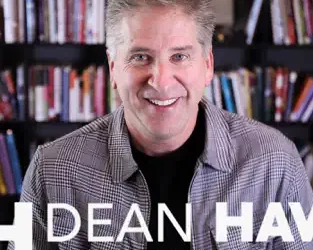We’ve all had “ah-ha” experiences in life, and hopefully we have more than less of them, because they are very helpful in life, relationships, and leadership. Sometimes this can be called insight, or the lights came on, or even it all came together. All of these terms describe clarity. Simply put, clarity is the capacity to perceive the important.
When you find yourself frustrated in trying to communicate to another about how things are going in your life, and realize they are more engaged in their own world than they are yours, that is clarity: I’m working too hard to express myself here! Or when you are getting to work early in the morning leaving late in the evening, and realize you need to work smarter instead of harder, that is clarity: I have to come at this from another angle!
The opposite of clarity is obscurity. Think of when your car windshield is dirty from the weather. You can’t see what’s out there, and the outside view is fuzzy. When we fail to engage in clarity, our choices and relationships don’t go right, and we don’t get to our goals and passions.
Fortunately, clarity is a skill that can be learned and used practically. When you practice the following tips, it will save you lots of time, energy and resource.
Know what you want. You can’t figure out your route unless you know your
destination. If someone came to you with their Google Maps app open, and said, “How do I get there? I need clarity”, you would say, “Get where? To Des Moines, or to New Zealand, or to a great Chinese restaurant?” Don’t be hesitant to say what you want. Maybe you want your organization to be more efficient, or for your team to collaborate better. Maybe you want to solve a parenting problem that won’t go away. State it, and write it down for yourself.
Ask “why” before “how.” How is important, but it must always follow why. We are a quick-fix culture, and it’s not paying off for us. We often give in to band aid fixes (the how) and not permanent solutions at a core level (the why). I was working with two business partners who wanted to make decisions with less conflict. They started the conversation with, “we need 3 steps to better decisionmaking.” They had their laptops ready to take notes. I said, “Great, then let’s talk about why you have problems making decisions.” They were a little frustrated because they wanted quick answers, liked “active listening”, be rational” and “make a plan.” But I have done this enough that I knew if we didn’t find out why they clashed, those three answers would be useless. We got to the why, and things ended up well.
Be open to new and negative. Our brains tend to go in paths we are used to. We just stay in our comfort zones. An engineer friend of mine once told me that there are 2 rules of engineering: First, if something doesn’t work, use a hammer. Second, if it still doesn’t work, use a bigger hammer (apologies to all my engineer friends). Instead, get onto your whiteboard or a large sheet of paper, maybe with a team, and get outside of the box. Just brainstorm ideas, especially that involve bad news, which isn’t comfortable. But you might find clarity in that uncomfortable or negative place. It might be messy. It might involve effort. But who cares? This is actually the core of all creative inventiveness.
Look at yourself (ouch). Finally, people who use clarity are brave enough to face their own shame and self-judgment and say, “Could the problem be me?” In fact, the most successful people I work with start with this one. It’s the best first step. Remember: if one person tells you that you are a horse, tell them they need to be on meds. But if seven people tell you that you are a horse, go buy a saddle. Take the beam out of your eye and things will clear up.
Clarity will open you up to new answers and new opportunities. Spray that
ammonia solution on the windshield of your brain! It will be worth it.
Best,
John






